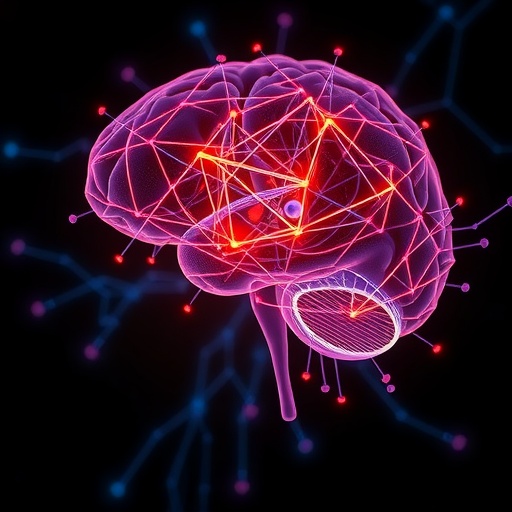In the relentless pursuit of improving mental health diagnostics, a new breakthrough has emerged at the intersection of artificial intelligence and psychiatry. Researchers have introduced a novel computational framework called DNet, a depression recognition network combining the prowess of residual neural networks and vision transformers. This avant-garde model seeks to tackle the complexities involved in diagnosing depression, one of the world’s most pervasive mental health conditions, by focusing on subtle facial cues that are often imperceptible to the human eye.
Depression remains a pressing global health concern, with devastating emotional and societal consequences. Despite extensive research, diagnosing depression remains fraught with challenges, owing in part to the subjective nature of psychological evaluations and the varied symptomatology across individuals. DNet offers a revolutionary alternative: an automated system that leverages facial image analysis to capture nuanced emotional states indicative of depressive severity. This approach harnesses an array of computational techniques to extract and interpret intricate patterns from both global facial images and detailed local facial regions.
The core innovation of DNet lies in its architectural design, which integrates two pivotal components — the Feature Extraction Module (FEM) and the Vision Transformer (ViT) Block. The FEM is engineered to intelligently extract salient features from images by utilizing an advanced attention mechanism. This mechanism accounts not only for the channel-wise features but also the positional context within facial feature maps, which is essential for identifying fine-grained expressions linked to depression.
What sets DNet apart from conventional models is the dual stream processing pipeline. It processes full facial images and localized facial segments separately through dedicated FEM units to concentrate on distinct zones such as eyes and mouth — areas known to exhibit subtle expression shifts correlated with depressive states. By parsing these local and global cues in isolation, the network garners richer semantic information before merging them for comprehensive analysis.
Once the FEMs have distilled the critical features, their output maps are fused along the channel dimension using a feature pyramid network (FPN). This fusion enhances the model’s ability to amalgamate information at multiple scales, enriching the representational quality. The combined feature map is then forwarded to the ViT block — a transformer-based model adept at learning complex spatial-temporal dependencies. The ViT’s self-attention mechanisms enable the network to focus on vital regions across the fused image representation, thereby amplifying relevant features while mitigating noise.
The concluding stage of DNet involves a 1×1 convolution followed by a fully connected layer. This architectural choice effectively tailors the feature channels and refines the network’s representational capacity, culminating in robust prediction scores that correspond to depression severity levels. The model’s output serves as a quantitative measure, offering clinicians objective insights alongside traditional assessments.
DNet’s efficacy was scrutinized through rigorous experiments on two datasets: the established AVEC2014 benchmark and a newly constructed dataset named CZ2023, comprising a wide spectrum of facial expressions related to depression. The results were compelling, with the model achieving mean absolute errors (MAE) of 6.09 and 6.73, and root mean square errors (RMSE) of 7.85 and 8.47 respectively, underscoring its precision in predicting depressive states from facial data.
Beyond its impressive predictive capabilities, DNet emphasizes interpretability through its attention mechanisms. The model visually highlights areas of the face that contribute most significantly to its decisions, providing transparency that is often lacking in black-box AI systems. This not only enhances trustworthiness but also aligns closely with clinical knowledge about emotional expressivity in depression.
Importantly, the study suggests that while general facial expressions may appear superficially similar across individuals regardless of depression status, subtle localized differences, especially in muscle movement around the eyes and mouth, serve as reliable biomarkers. DNet’s dual approach capitalizes on this insight, setting a new paradigm for affective computing in psychiatric diagnostics.
The integration of residual network elements within the FEMs plays a critical role in preserving low-level feature integrity during deep learning processes, mitigating issues like vanishing gradients, and allowing the network to model increasingly sophisticated facial representations. Meanwhile, the vision transformer contributes a global contextual understanding that allows the system to weigh interactions across the entire facial landscape dynamically.
This interdisciplinary venture unites advancements in computer vision, machine learning, and clinical psychiatry, presenting a scalable and practical framework for early depression recognition. The implications span telepsychiatry, automated screening, and personalized mental health interventions, addressing an urgent need fostered by rising global mental health burdens.
Future work is anticipated to expand DNet’s capabilities, potentially integrating multimodal inputs such as speech, physiological signals, or behavioral patterns, thereby enriching diagnostic fidelity. Moreover, the prospect of deploying this technology in real-world settings invites discussions around ethical considerations, data privacy, and the importance of equitable model training across diverse populations.
In sum, DNet represents a transformative leap toward automated, non-invasive, and interpretable depression detection. Its sophisticated architecture deftly combines global semantic grasp with targeted local analysis, empowering a deeper understanding of the subtleties inherent in depressive facial expressions. As mental health care increasingly embraces digital tools, models like DNet stand poised to revolutionize the landscape, offering hope for timely diagnosis and more effective treatment pathways.
Subject of Research: Automated Depression Recognition through Facial Image Analysis Using Deep Learning Models
Article Title: DNet: a depression recognition network combining residual network and vision transformer
Article References:
Jiang, Z., Xu, K., Gao, X. et al. DNet: a depression recognition network combining residual network and vision transformer. BMC Psychiatry 25, 880 (2025). https://doi.org/10.1186/s12888-025-07322-0
Image Credits: AI Generated
DOI: https://doi.org/10.1186/s12888-025-07322-0




